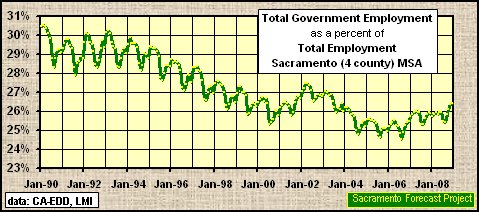[ad_1]
In recent years, the growth in the divorce rate among middle-aged and older American couples has been an interesting trend that many researchers have been monitoring. Notably, studies, reports, and other analyses from the past few years have found that, over approximately the past three decades, the divorce rate for adults under age 35 has continued to decrease, while the divorce rate for adults of 45 years of age and older has continued to significantly increase over that same timeframe. The increase in the divorce rate has been especially pronounced when solely isolating the analysis to adults ages 55 – 64. This overall phenomenon is sometimes referred to as the rise of the “grey” divorce.
Regardless of the potential rationale or basis for this societal phenomenon, its mere existence has also contributed to the rise of some special, unique considerations which should be evaluated in connection with divorces and dissolutions of couples in this particular age demographic. While not intended to be all-inclusive, this two-article series explores some of those special considerations. In the first installment of this series, we will examine three special considerations—specifically, spousal support, access to health insurance and adult children.
Spousal Support
Spousal support — also referred to as “alimony” — is the payment of monetary support from one spouse to another in connection with the termination of a marriage. While the relevance of spousal support to a divorce or dissolution matter certainly knows no age, and can be applicable to a case involving persons of any age demographic, the concept of spousal support tends to take on a different level of importance in connection with divorces or dissolutions involving middle-aged and older adults. Although this may be true for several reasons, current demographic trends suggest that the largest reason for this is relatively obvious: the older the couple, the more likely it is that the marriage will have been of a longer duration and, at least in Ohio, the longer the marriage, the more likely it is that spousal support will be awarded in a divorce or dissolution proceeding. Moreover, in Ohio, the longer the marriage, the more likely it is that spousal support will be awarded for an extended — potentially, indefinite — duration.
While the aforementioned explanation is inherently overly-simplistic for a number of reasons—especially because there are a number of other factors that Ohio courts must take into account in addition to the duration of a marriage when determining whether to award spousal support in a case—the general takeaway remains valid. As such, not only may spousal support take on an enhanced importance in a divorce or dissolution involving a middle-aged or older couple, but the older ages of the parties involved may necessitate some unique considerations and creative solutions when addressing spousal support in such matters.
For example, a husband who has always been the primary breadwinner of his household — but is now 65 years old and divorcing his wife of more than 30 years – may not continue to remain employed at the same income level for years to come, due to his intended retirement or otherwise. Regardless of the circumstances, this reality may impact the husband’s future ability to continue to pay spousal support to the wife at the same level as he may presently be able to pay. While there are a number of ways to address this particular type of situation, the point is that these types of special considerations are more likely to present and thus, need to be taken into account, when evaluating the issue of spousal support in cases involving middle-aged and older couples.
Additionally, in light of this potential complication, it is also not uncommon in these particular cases for the issues of spousal support and the division of the parties’ assets and debts to need to be more closely examined and evaluated together. The reason for this is also relatively obvious: individuals who are middle-aged and older are more likely to be closer to exiting the workforce than younger individuals, and in this way, the property division between the parties may, to some extent, need to fill in where income—and thus spousal support—might otherwise leave off.
Access to Health Insurance
Typically, the termination of a marriage by order of the court is a qualifying life event for purposes of removing a spouse as a dependent from the other spouse’s health insurance coverage. In this way, once a divorce or dissolution is finalized, an adult spouse will no longer be eligible to be covered under their former spouse’s health insurance plan, and thus, will lose that coverage, effective as of the official date of the termination of the marriage.
Regardless of the age of the parties, a spouse’s continued access to private health insurance is often particularly important in many divorce or dissolution cases, especially when the spouse at issue is not employed outside of the home or otherwise does not have access to private health insurance coverage. Yet, for a variety of reasons, the continuity of health insurance coverage tends to, understandably, be an even more important consideration for older divorcing couples. This is especially true for those older or middle-aged individuals who are not employed outside of the home or otherwise do not have access to private health insurance coverage, but who are not yet quite eligible for health insurance coverage through Medicare. In contrast to younger divorcing adults, it may be more difficult for middle-aged or older adults, in light of their recent employment history (or lack thereof) and/or certain pre-existing conditions, to access replacement private health insurance coverage until they become eligible for Medicare.
As a result, for a middle-aged or older spouse involved in a divorce or dissolution action who might not yet qualify for health insurance coverage through Medicare, his or her continuing access to health insurance coverage, in the interim, is likely to be an important consideration. While this particular situation can be addressed in several ways, one option that may need to be explored is the availability and cost of continued health insurance coverage for the affected spouse under the Consolidated Omnibus Budget Reconciliation Action of 1985 (“COBRA”). Under COBRA, temporary continuation coverage may be available to a spouse who was already enrolled in the other spouse’s group health insurance benefits at the time of the divorce or termination of marriage. In many circumstances, however, COBRA coverage—or, alternatively, access to any replacement, interim coverage otherwise available through the Marketplace—can be quite costly. Thus, for affected middle-aged and older spouses, at a minimum, this issue should be explored and may need to be factored into the overall financial analysis of the parties.
Further, in certain circumstances, other legal options may exist for separating middle-aged and older parties in order to ensure continuity of health insurance coverage for a spouse. Specifically, in order to bypass a former spouse’s loss of dependent status for health insurance purposes, some middle-aged and older couples in Ohio choose to seek a legal separation, instead of a divorce or dissolution. A legal separation is a distinct legal proceeding in Ohio, the end result of which is an order from the court deeming a married couple legally separated, resolving any custody issues, and otherwise addressing any property division and financial issues. In contrast to a divorce or dissolution proceeding, however, at the conclusion of a legal separation proceeding in Ohio, the marriage itself remains intact.
Yet, while a legal separation, for some time, commonly operated as an effective loophole in Ohio to bypass a spouse’s loss of dependent status for health insurance purposes, this is, unfortunately, no longer always the case. Indeed, depending on the health insurance plan at issue, there may even be additional, unique stipulations in place, other than those discussed in this article, which impact a spouse’s continued eligibility for dependent coverage on his or her spouse’s health insurance plan. To this end, to the extent continued dependent coverage is an important factor in the matter at hand, it may be prudent for the parties at issue to investigate and preemptively become aware of the terms and conditions of the particular health insurance policy, as to avoid any unexpected or unintended circumstances.
Adult Children
Typically, absent an agreement, a domestic relations court loses jurisdiction to issue orders regarding the parties’ child once the child is over age 18 and otherwise emancipated. However, for many parents, when a child becomes a legal adult, that does not inherently mean, as a practical matter, that they immediately choose to stop providing for their child. In fact, as more adult children pursue advanced education, it is not uncommon for parents to continue to provide some level of support to their children well past the age of majority, whether by way of guaranteeing school loans or otherwise. In this way, for divorces and dissolutions involving middle-aged and older couples with adult children, it may be important to remain mindful of and potentially provide for any ongoing arrangements that the parties have—or plan to have—with their adult children.
In the next and final installment in this series, we will explore three other considerations that are particularly unique to divorce and dissolution proceedings involving middle-aged and older couples—specifically, the division of assets and debts, retirement benefits and assets and subsequent estate planning.
At KJK Family Law, we are experienced in dealing with all aspects of the termination of a marriage, including those which may more commonly impact middle-aged and older parties. For further guidance on these and other related matters, please contact John D. Ramsey ([email protected]), Janet Stewart Scalley ([email protected]), or another member of KJK Family Law by calling 216-696-8700.
[ad_2]
Source link





More Stories
Will a review of Iran’s hijab law stop the protests? – HotAir
The Importance of How You Announce Your Company’s M&A Deal – KJK
Iran’s morality police dissolved, says prosecutor general